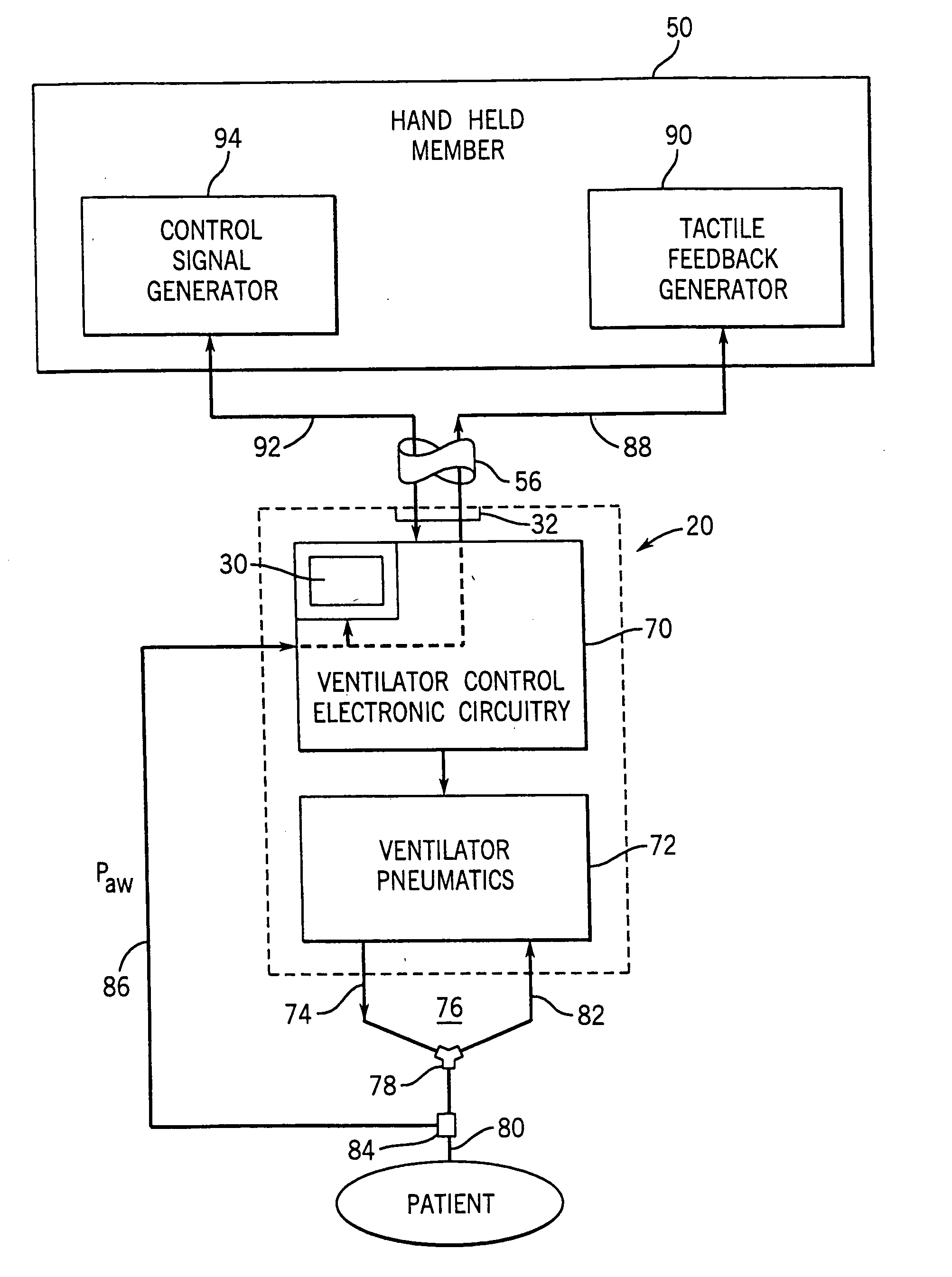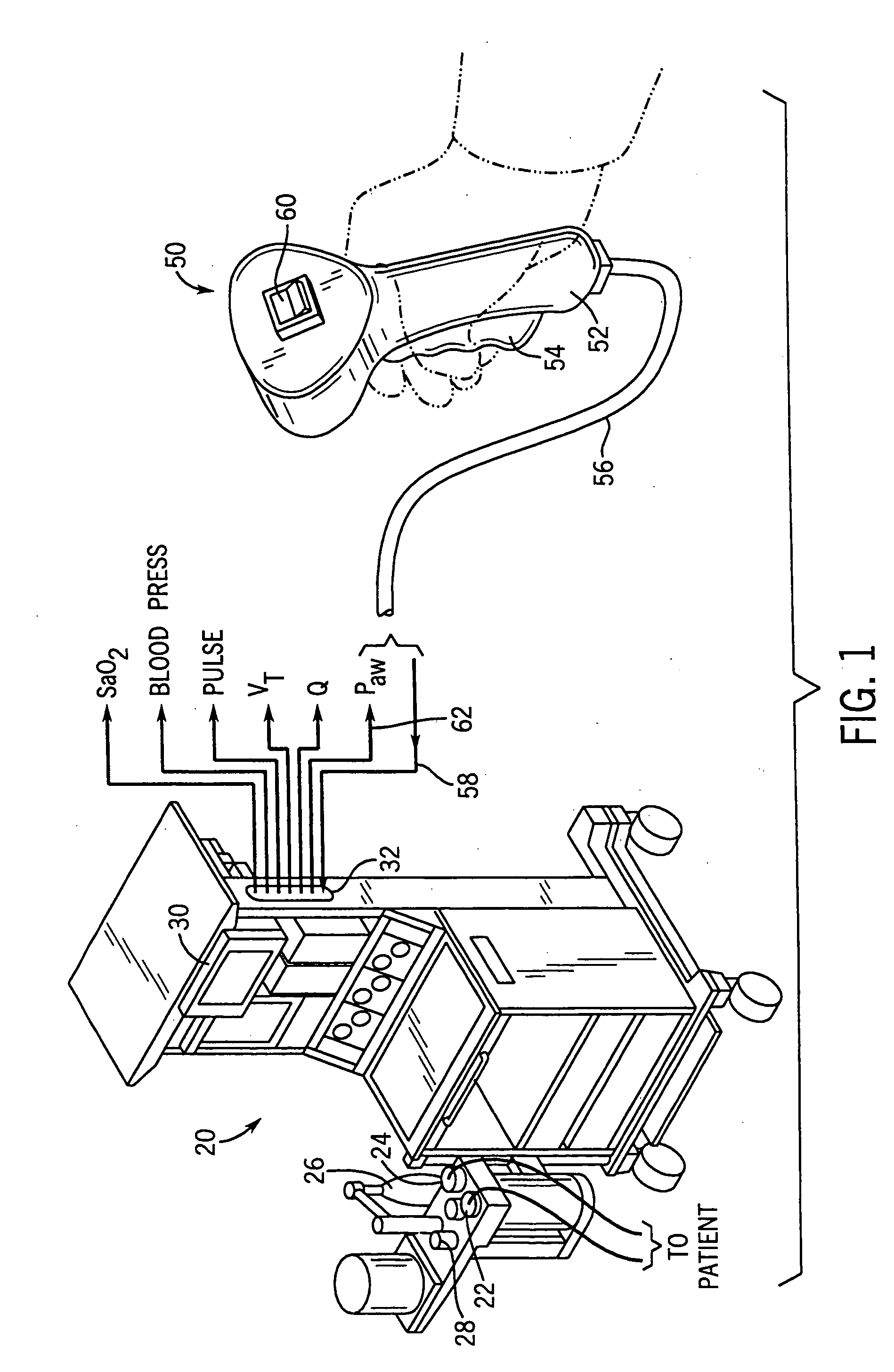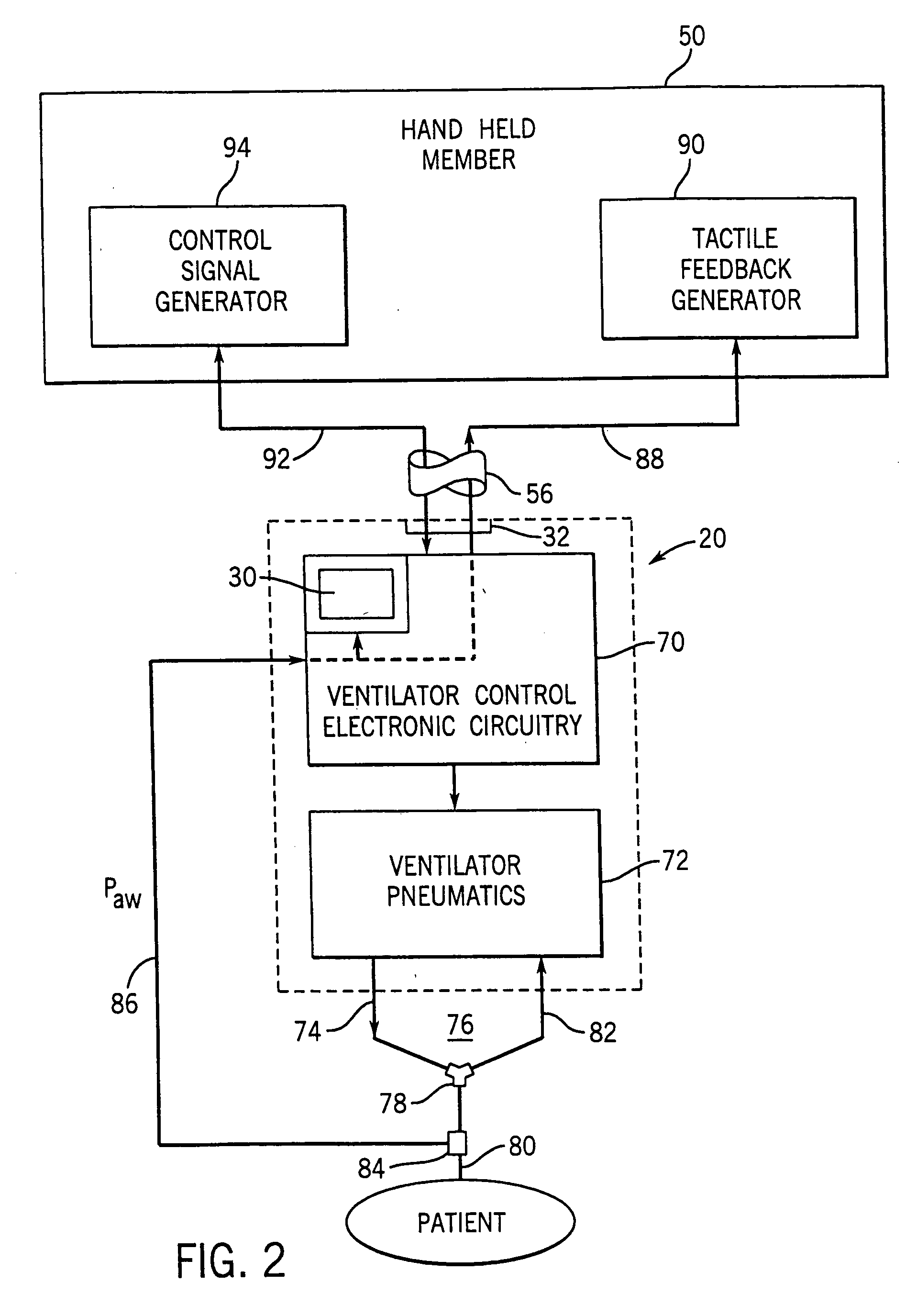Remote control and tactile feedback system and method for medical apparatus
a technology of remote control and tactile feedback, applied in mechanical equipment, valves, operating means/releasing devices, etc., can solve the problems of difficult or impossible to obtain this type of feedback information, affecting the clinical practice, and reducing the fineness of the control of breathing gas supply and the sensing of lung or other respiratory conditions affecting the subject, etc., to achieve the effect of not easily simulated in the field or classroom
- Summary
- Abstract
- Description
- Claims
- Application Information
AI Technical Summary
Benefits of technology
Problems solved by technology
Method used
Image
Examples
Embodiment Construction
[0039] Medical apparatus suitable for use with the system of the present invention is shown in FIG. 1 as ventilator 20 incorporated in an anesthesia machine. Ventilator 20 has connectors 22 and 24 suitable for connection to the inspiratory and expiratory limbs of a breathing circuit leading to a patient, as diagrammatically shown in FIG. 1. Ventilator 20 provides breathing gases to the patient in the inspiratory limb of the breathing circuit and receives gases expired by the patient in the expiratory limb.
[0040] Ventilator 20 is provided with bag 26 for manually bagging the patient. Switch 28 is operated to allow bag 26 to provide breathing gases to the patient.
[0041] Ventilator 20 receives inputs from sensors associated with the patient and / or ventilator 20. The data contained in these inputs may be displayed on patient monitor 30. Data relating to the sensed parameters is also provided to terminal 32. Typical data outputs are shown as patient airway pressure Paw, tidal volume VT...
PUM
 Login to View More
Login to View More Abstract
Description
Claims
Application Information
 Login to View More
Login to View More - R&D
- Intellectual Property
- Life Sciences
- Materials
- Tech Scout
- Unparalleled Data Quality
- Higher Quality Content
- 60% Fewer Hallucinations
Browse by: Latest US Patents, China's latest patents, Technical Efficacy Thesaurus, Application Domain, Technology Topic, Popular Technical Reports.
© 2025 PatSnap. All rights reserved.Legal|Privacy policy|Modern Slavery Act Transparency Statement|Sitemap|About US| Contact US: help@patsnap.com



